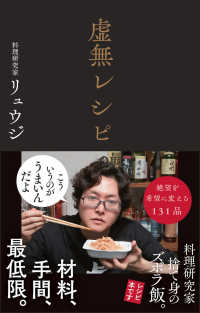- ホーム
- > 洋書
- > ドイツ書
- > Social Sciences, Jurisprudence & Economy
- > Education Science / Pedagogic
- > general surveys & lexicons
Full Description
This textbook is a practical and theoretical teacher guide on how to develop critical thinking and source criticism in contemporary elementary and secondary education, which requires students to develop their critical thinking from different perspectives as well as to develop their ability to critically evaluate sources they use for school-related work. What can a teacher do to support such development? The authors discuss several different perspectives on how one, as a teacher, can think about and work with source criticism together with the students. In the first part of the book a theoretical background and a principled discussion of critical thinking are discussed. This includes psychological and philosophical perspectives on source criticism. In the second part there are concrete teaching examples and tips on how to work with source criticism in both primary and secondary school.
Contents
Introduction.- What is critical thinking?.- What is it that is analyzed critically?.- Psychological perspectives.- Philosophical perspectives.- Further reading ‒ literature on critical thinking.







